Now Reading: 10 Best Places to Visit in Patan for Heritage, History & Spirituality
-
01
10 Best Places to Visit in Patan for Heritage, History & Spirituality
10 Best Places to Visit in Patan for Heritage, History & Spirituality
1. Rigional Science Musuem Patan

Patan hosts a multidimensional establishment called the Regional Science Centre which stands dedicated towards science-focused learning development and innovative activities. This facility uses its purpose to spread understanding about scientific knowledge while inspiring observers to become curious about modern science and technology effects during their everyday activities. The museum features educational activities and abundant knowledge that welcomes visitors as students and science fans and anyone seeking exploration.
A Centre for Science
The Regional Science Centre in Patan exists to deliver scientific knowledge to all audiences through enjoyable means. The facility demonstrates how science together with technology has developed through time fostered various applications to enhance everyday living standards. The museum creates a connection between academic knowledge and practical uses using its mix of exhibitions and interactive seminars and teaching sessions.
What to Expect at the Regional Science Centre
The establishment allows visitors to explore its content through modern interactive elements which combine education with entertainment. Some of its highlights include:
Science Exhibitions: A variety of permanent and temporary exhibits covering physics, chemistry, biology, and space science.
The museum provides interactive sessions that enable people to experience scientific principles through direct experimentation activities.
Scientists and educational experts conduct frequent talks focused on sharing modern scientific and technological developments during seminars and popular lecture sessions.
Science Camps & Workshops represent educational events that stimulate students and young people to train their problem-solving capabilities alongside critical thinking.
Visitors who like space and astronomy studies will love the planetarium and astronomy sessions at the venue.
2. The Sahasralinga Talav
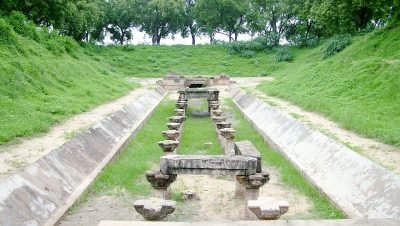
Sahasralinga Talav, also called as Sahasralinga Tank is one of the outstanding artificial water bodies of medieval India. Situated in Patan, Gujarat this ancient monument is one of the place from the list of the Monument of National Importance protected by the archaeological Survey of India (ASI). Built during the Chaulukya (Solanki) regime, this lake is a symbol to the compact irrigation system and grand structure of olden times.
History
The Sahasralinga Talav was previously named as Durlabh Sarovar, it was commissioned by the king Durlabh Raja. Later it is being repaired and renovated much by King Siddharaj Jaisinh in 1093 – 1143 A.D. This enormous tank is considered as one of the highest and most massive of the water storage reservoirs built during the Solanki period.
Medieval chronicles and inscriptions of this era attest the digging of a great many lakes, wells and reservoirs by both state sponsors and private persons. Among these are, for example, some of the most well known examples such as:
- Mansarovar Lake at Viramgam
- Tank at Modhera (near the Sun Temple)
- Sahasralinga Talav at Patan
- Architectural Brilliance
The Sahasralinga Talav was an engineering wonder of its time, planned to save water in an efficient manner. The tank was designed smartly to let water from the Saraswati River to flow into a deep Rudra Kupa (stepped well), then to a large circular reservoir by stone carved ducts.
Key architectural highlights include:
- More than 1,000 little shrines (lingams) were built to the surround of the reservoir, marking the presence of lord Shiva.
- A stone-carved tidal concatenation let water flow naturally from the Saraswati River.
- A span allowing the shrines to be visited even at times of high water level.
- Intricate carvings and sculptures which exemplifies the creative works of Solanki era.
Religious and Cultural Importance
The Sahasralinga Talav was not only a water storage system but is also a sacred and cultural place. Presence of a thousand lingams around the tank procures the profound Shaivite effect in the area. Either they are performing some rituals on the shrines and getting some peace and Blessings, hence such sacred importance of the site is there.
- The reasons to explore Sahasralinga Talav will become clear in the following paragraphs.
- The tank displays medieval Indian scientific knowledge through its distinctive hydraulic and irrigation techniques.
- Sculptural and stonework elements showcase Solanki expertise in their peak during this time period.
- This sacred site holds great religious significance because thousand Shiva lingams exist for worshiping and pilgrimage.
- Visitors can find a remarkable photographic location along with a perfect spot for historical enthusiasts because of the captivating stone ruins complemented with water channels and step-wells.
Best Time to Visit
The best period for traveling to Sahasralinga Talav occurs between November and February when weather conditions are suitable for visiting the site. For the best possible lighting conditions photographers should plan their visits at dawn or during the late parts of the afternoon.
3. Varana Temple
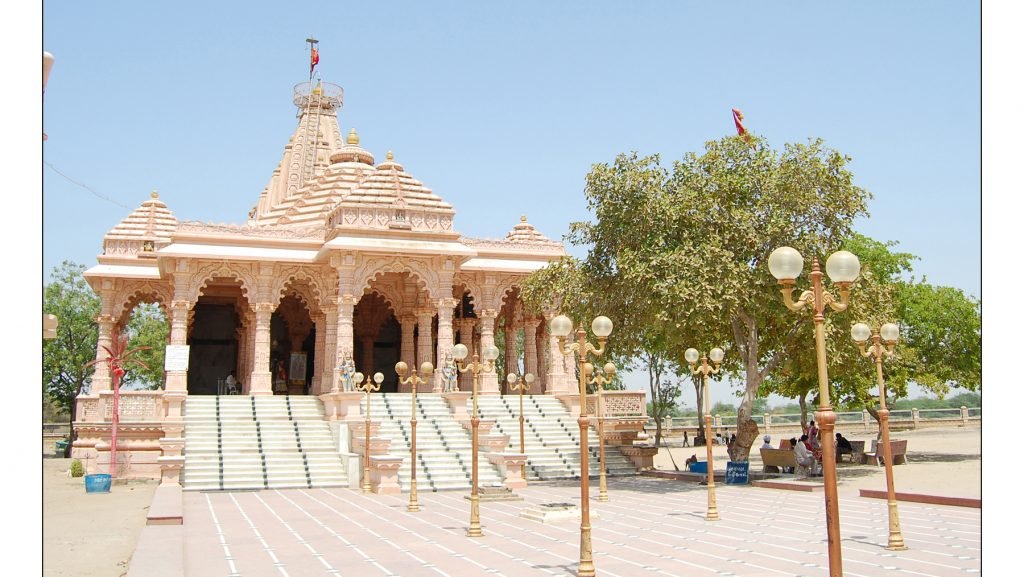
Shree Varana Khodiyar Mata Temple creates a spiritual emblem in the region where it rests between three pristine rivers and within the arid landscape of the wilderness. Visitors experience both religious devotion and worship at Shree Varana Khodiyar Mata Temple because it plays a vital role in the cultural and faith traditions of the Vadhiar Panthak. Devotees from different regions travel to this temple because it stands as the biggest religious center which provides visitors the blessings of Mata Khodiyar.
The tribal goddess Khodiyar Mata embodies eighteen sacred forms through which she delivers protection together with strength along with prosperity. People regard this deity as their protecting deity because they believe she maintains and grows both the land and its inhabitants. Her temple, an architectural and spiritual marvel, radiates an aura of peace, devotion, and mysticism.
Every year the Shree Varana Khodiyar Mata Temple locals eagerly look forward to the Bhatigal Mela which lives up to its reputation as it brings unmatched enthusiasm during the festival. The fifteen-day Bhatigal Mela beginning on Maha Sud Ekam and ending on Punam showcases an impressive collection of religious devotion along with cultural entertainment along with traditional rites.
Highlights of the Bhatigal Mela:
- Many worshippers from multiple areas of the region unite at this location to pray and ask for divine blessings.
- Apart from foot dances the temple organizes ceremonial chariot parades which form a captivating visual experience.
- Every section of Wadhiar becomes a living paradise when joy and worship unite with celebrations during this period.
- The temple complex receives a divine mood through the presentation of colorful flags along with rituals and traditional performances.
Cultural Significance and Traditional Roots
Shree Varana Khodiyar Mata Temple maintains the Wadhiar culture by protecting its time-honored customs. The Vadhiar Panthak community in all its regions maintains deep respect for its unique beliefs and customs that they have upheld through multiple generations. The temple and its annual fair serve as a living testament to the undying faith of the devotees.
4. Panchasara Jain Temple
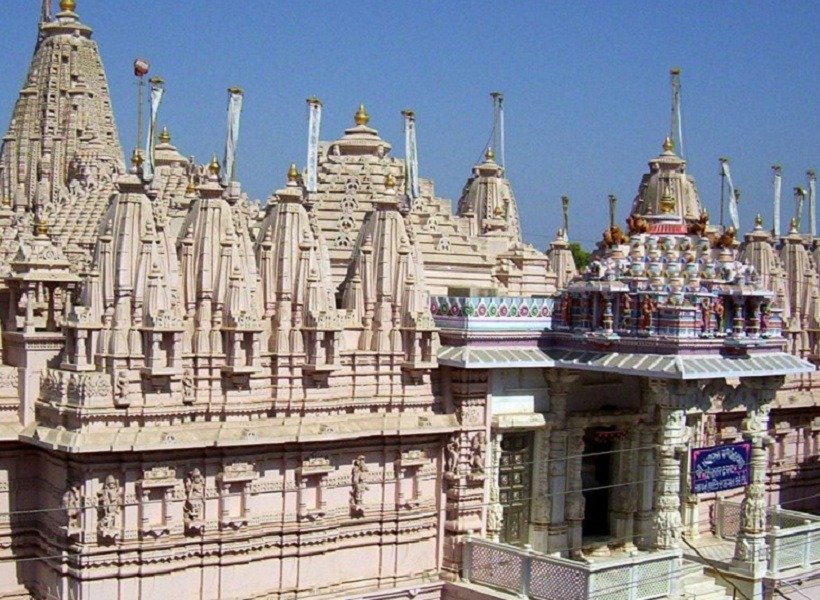
The Panchasara Parshwanath Jain Temple, in Patan, Gujarat, is a sacred and significant temple holding history as well as spiritual value to the Jain and history loving people. This remarkable Śvetāmbara Jain temple, built in the 8th century, remains as a true evidence of Jain architectural and religious art.
History
The temple was built in 8th century in the domain of Vanaraja Chavda, the most influential ruler of the Chavda dynasty. He set up the city of Patan in 746 CE and ordered the temple to be constructed and housed in a revered idol of Parshvanatha, which was got from Panchasar village.
Patan was then a significant Jain pilgrimage site in the time of the Chaulukya (Solanki) dynasty when over 100 temples were constructed here. But due to repeated hurdles of invasion; the temple has reconstructed during 16- 17th centuries when it was destructed by Muslim invaders. It has remained the home of some of the biggest and significant Jain temples of Gujarat.
- The Panchasara Parshwanath Temple is a king of Jain temple, featuring amazingly exquisite white marbel craft and holy decorations. Some of remarkable architectural features of it are:
- Deity Padmavati: The idol is also picturised with an image of Padmavati holding to lotus, a noose, and a goad in her hands.
- Domical Ceiling: The temple’s magnificent domed ceiling has concentric circles of carvings, and a lotus-shaped pendant in the center of it.
- Beautiful Dolls: That the temple has 8 bracket figures of music and dance and figures of seated Trithankars, with Yaksha and Yakshi vary throughout the temple structure.
- Other Deities: Also worshipped in the temple are an idol of Vasupujya, images of Jain monks Kakkasuri, Devachandrasuri along with Yashodevsuri.
Hemachandracharya Jain Library: A Treasure of Jain Literature
Beneath the temple lies the Hemachandracharya Jain Gyan Mandir one of the largest Jain library in Gujarat. Founded by Buyer of his astra Hemachandra library holds ancient palm-leaf manuscripts, rare texts & important Jain scriptures. It houses:
- A paper manuscript of Parshvanathacaritra.
- The oldest available manuscript of Bhaktāmara Stotra.
- This library is an intellectual and spiritual rich collection, which is home scholars and researchers from all over the world.
Spiritual and Cultural Importance
In the Śvetāmbara tradition,Jain idols frequently bear the name of their creation place. Panchasara Parshwanath one among 108 big idols of Parshvanatha and enjoy huge Significance among Jains. The Temple aspires to be a spiritual center of knowledge, it attracts pilgrims who wish to seek peace, enlightenment and blessings.
5. Patola
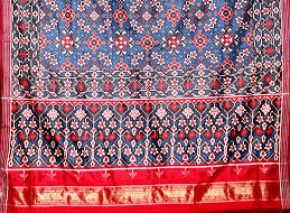
Patola is a pad Thai handwoven textile the capital and most of India. Nashik Gujarat brings you the exclusive intricate double ikat weaving technique since centuries, and is topples the saarf is a status symbol of opulence, and master pieces of heritage. The name Patola is of the plural form and the singular term of Patolu. These sarees are famous for their bright hues, intricate geometric designs and is value is associated to the culture.
A Textile of Aristocracy
Patola sarees were once draped by royal and nationalist person, as it was extremely priceless and other companies due to its operation intensification method and it fabric made of premium silk. To this date, these sarees are considered as a prestige buy, dreamt of by people who value good quality.
The velvet Patola type, the variant of traditional design is also produced in Surat indicating the diversity and wealth of fabric in different parts of Gujarat.
The Secret Art of Patola Weaving
Patola weaving is an art that has been passed down for generations from one family to the other and is a closely guarded family tradition. Presently only three families in Patan undertake this peculiar and intricate weaving art.
What Makes Patola Unique?
Double Ikat technique in Single Ikat weave where warps or weft are dipped in colors before weaving, Patola is one of two contributions where the threads for warp and for weft are dyed separates before they are woven together.
- Very Time-Consuming Process: The entire design of a single Patola saree can take anything from six months to a year based on the intricacy of the design.
- Strictly Family-Taught: This activity is not open up to the public and generally just taught in most cases pertaining to only the dude varieties of the household.
- Vibrant colours only through natural dyes: These Sarees are made on natural dyes, they retain their vibrant colors.
- Perfect Geometric Precision: The same image recreates on both sides of the fabric showing that same symmetry in the patterns and mirrors making Patola sarees as a craft work.
Why Patola Saree is So Exclusive
A sign of Status: Wearing Patola saree is considered as a status symbol and sophistication.
Investment Pieces: Because Patola Saree is resilient and beautifully handmade, it is often handed down as the heirloom.
Great for Occasional Wear: These sarees become the first preference for Weddings, festival and grand occasions.
Handwoven Finerty: Every saree is a sole artwork and woven with love and precision.
6. Rani ki Vav
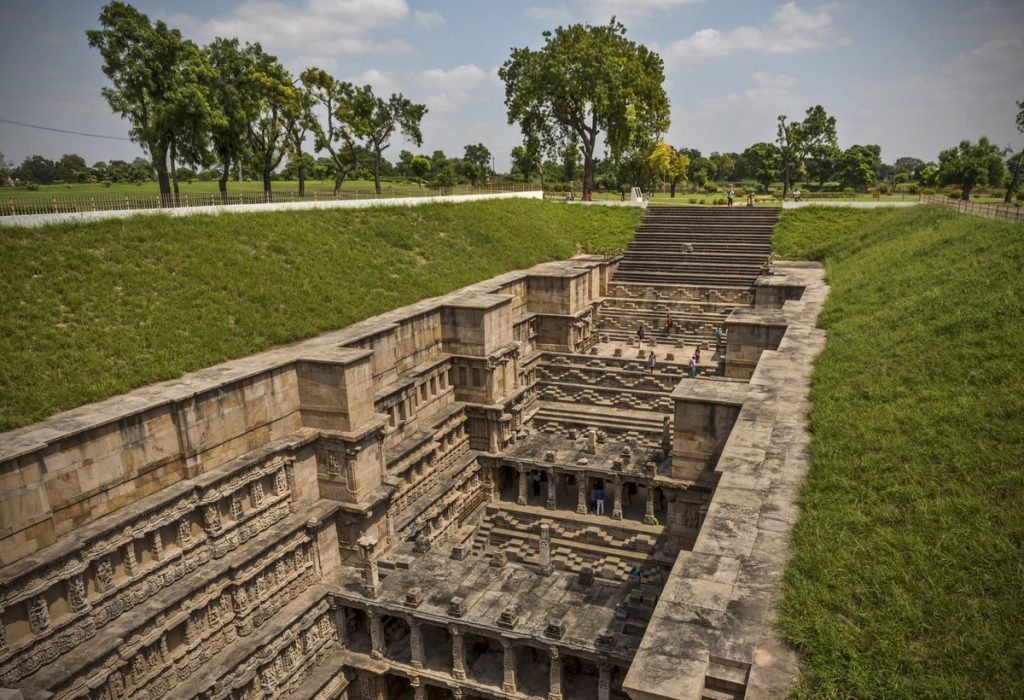
Rani ki Vav is a rare example of a stepwell found in Patan, Gujarat, India, and is considered as one of the finest examples of ancient India architectural marvel. Built in the 11th century AD on the banks of Saraswati river, the intricately made structure is epitomized as an emotion of love, craftsmanship and engineering proficiency. Ascribed as a UNESCO World Heritage Site on June 22, 2014, Rani ki Vav of India is an ego of its proficiency in stepwell.
This beautiful stepwell was sponsored by the Queen Udayamati in the memory of her husband King Bhimdev I of the Solanki dynasty. Stepwells, or vavs, were typically used as water storage or resource management, Rani ki Vav is more than that a masterpiece of Maru-Gurjara architecture with elaborately carved figurines, sculptures, and an inverted temple-like appearance.
Rani ki Vav is built in Maru-Gurjara style of architecture using intricate detailing, symmetrical planning and importance to a spiritual element. The stepwell is a figurative inverted temple, representing the sacred nature of water and echoes India’s profound cultural and religious sentiments.
- Seven flights of stairs, every one of which is decorated by beautiful statues and complicated mosaics.
- Over 500 main sculptures of Hindu gods, mythological themes, heavenly creatures and apsaras (divine female dancers).
- A well preserved water management system, which speaks of superior hydrological knowledge of that age of Solanki.
- Complex carvings depicting tales from Hindu texts, of all Gods commonly known for holding an ‘Avataar’ of Lord Vishnu, scenes from Ramayana & Mahabharata, Nagakanyas.
- In 2014 Rani ki Vav is inscribed as a UNESCO World Heritage Site for the architectural and historical importance.
- In 2016, by Indian Sanitation Conference (INDOSAN) was given the the title of “Cleanest Iconic Place in India” by Prime Minister Narendra Modi
Visit Rani ki Vav
- Must See Marvel: Admire the intricate and majestic testament of one of India’s best preserved stepwells.
- Immense historical and cultural importance: A great place to have a lesson in ancient irrigation techniques and Indian history.
- Landscape Photographer’s Dream: Photo majestic stone columns and balanced stairways that turn this monument so visually appealing.
- Spiritual Ambience: The temple like temple plan and mythological carvings make it a serene and meditative space.
Best Time to Visit
The best time to visit Rani ki Vav is in the winter season (October to February) that suits for visiting as the climate is gentle. The stepwell open for the public throughout the year, but early morning or late afternoon makes the ideal time to view and appreciate its intricate carving.
7. Bindu Sarovar, Matru Tarpan Place, Sidhpur
Situated at Sidhpur, Gujarat, Bindu Sarovar is a holy tank with highly sacred and ancient significance. Located 27 km away from Patan and 36 km from Mehsana, this covetous place is situated on the banks of the Saraswati and is one of the sacred places in Gujarat. It is famous especially as Matru Gaya Kshetra, the rarest of place in India where Matru Shradh (routines after death for mother) is performed.
Bindu Sarovar is believed to have got its name from one of the drops of the tears of Lord Vishnu which fell into the water body, making it another sacred lake to take a bath in. Bindu Sarovar is one of Pancha Sarovars, or five sacred lakes of Hinduism, including :
- Manas Sarovar (Tibet)
- Pushkar Sarovar (Rajasthan)
- Narayana Sarovar (Gujarat)
- Pampa Sarovar (Karnataka)
While Hindus generally follow the practice of visiting Gaya in Bihar for the purpose of doing the pinda daan (ancestral offering) for male ancestors, it is at Bindu Sarovar only where Matru Shradh ( Mother’s Equality rituals) is done in India. On account of its symbolic spiritual and religious significance, it is frequently known as Sri-Sthal, or Pious Place – and it finds a mention in the Rig Veda.
Legends and Mythological Importance
- Bindu Sarovar has got its references in numerous ancient Hindu myths and sages, like Sage Kapila, Sage Kardhama, Lord Parshuram:
- Sage Kardhama said to have done penance of 10,000 years in this place and under divine vision of Lord Vishnu.
- Legend has it that Sage Kapila, who had imparted his teachings on Moksha (liberation) to his mother Devahuti at this very spot. He also carried out Matru Shradh for her salvation.
Lord Parshuram, the sixth reincarnation of Vishnu, is recongnized to have performed Matru Shradh for Renuka his mom at this spot. A temple of Lord Parshuram is situated close to the pond so that devotees can pay their visits.
Because of the immense spiritual significance of this place these two Bindu Sarovar are in order said to be holy as regard to Triveni Sangam in Prayagraj (Allahabad).
Temples and Religious Sites at Bindu Sarovar
The Bindu Sarovar visitors can visit ancient temples and shrines situated all around its periphery such as:
- Sri Kapila Mahamuni Temple
- Sage Kardhama Prajapati Temple
- Devahuti Temple
- Gaya Gadhadhara Temple
- Lord Shiva Temple (opposite Bindu Sarovar)
A grand religious fair is held at Bindu Sarovar at the time of holy month of Kartik (as per Hindu calendar). Thousands of devotees assemble for rituals and seek every blessings to have their departed mothers, making it hugely emotional and spiritual experience.
Other Historical Attractions in Sidhpur
The Archaeological Survey of India protects two sites within Sidhpur apart from Bindu Sarovar.
The 12th century temple known as Rudra Mahalay Temple was constructed by King Siddhraj Jaisinh in three stories with 1600 decorated pillars and twelve entry doors which contained eleven shrines to Lord Rudra.
- A three-story ‘shikhara’ (spire)
- 1,600 intricately carved pillars
- 12 entrance doors
- A grand central mandap with porches on four sides
- 11 shrines dedicated to Lord Rudra
- The sacred gateway Toran with its artistic carvings stands in front of Saraswati River
Modern ruins of the temple preserve portions of both the Toran and the pillars which demonstrate high artistic quality from that time.
Jami Masjid stands as a historical mosque that unites Hindu and Islamic architectural elements.
Tourists seek out Sidhpur because of its well-known heritage mansions along with havelis that belonged to the Dawoodi Bohra community which display exceptional woodwork combined with colonial-period architecture.
- The numerous advantageous aspects of Bindu Sarovar create a strong motivation to visit this site.
- Rewards Devotees with Something Special by Functioning as the Exclusive Location for Matru Shradh Memorials in All India.
- Deep Spiritual & Historical Significance: Associated with ancient sages and divine events.
- Architectural & Cultural Heritage: Explore Sidhpur’s temples, havelis, and ASI-protected monuments.
- A Tranquil Retreat for Devotees: Experience peace, devotion, and a sacred atmosphere.
- The Kartik Fair creates a lively atmosphere because thousands of people attend to conduct ancestral rituals.
Best Time to Visit
The best period to explore Bindu Sarovar falls within the Kartik month (October-November) when the regional fair is held. People visit the site as a pilgrimage destination throughout the entirety of the year.
8. Wild Ass Sanctuary
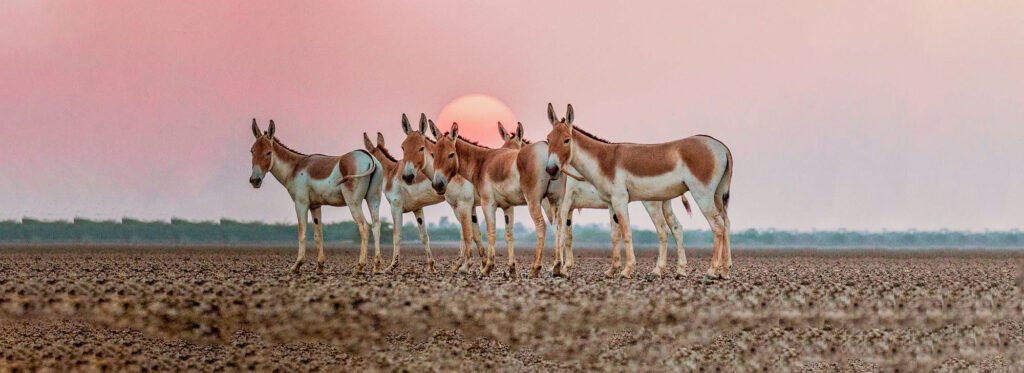
India holds the Wild Ass Sanctuary as one of its distinctive animal habitats which operates under the name Little Rann of Kutch. Operated in Gujarat this sanctuary maintains 4953 square kilometers of land which places it among the largest wildlife sanctuaries found within India. The sanctuary serves as the final habitat for the Indian Wild Ass (Equus hemionus khur) while it is commonly referred to as Ghudkhur.
Wild Indian Asses have their final habitat in this sanctuary which historically spread throughout northwest India together with Pakistan and Iran. The Indian Wild Ass faces endangered status because of declining habitat quality and growing human activities. As an endangered species this hardy running animal reaches speeds exceeding 70 km/h. Protecting and recovering the decreasing population of Indian Wild Ass has proven essential through conservation activities conducted within the Wild Ass Sanctuary.
The sanctuary serves as an essential living space for Indian Wild Asses while also becoming an exceptional site for bird enthusiasts. The Little Rann of Kutch hosts thousands of migrating birds during winter months making it stand among top birdwatching locations of India. The Little Rann of Kutch contains various notable species among which are:
Any nature enthusiast would be enchanted by witnessing thousands of beautiful pink flamingos during their visit to the wetlands.
Even in normal conditions the Little Rann of Kutch functions as an enormous salt desert which produces a fantasy-like planetary environment. Unlike the lush forests of other wildlife reserves, this sanctuary features:
Barren, cracked earth stretching to the horizon
Scattered shrubs and thorny bushes
The seasonal wetlands provide a habitat for many distinct species that come to visit.
The vast aridity of this region makes wildlife observation an exciting challenge since animals become visible against the vast desolate surroundings.
Best Time to Visit
- Winter months from November to February are the ideal to visit Wild Ass Sanctuary. This is when:
- Migratory birds fill the region and turn into birdwatcher’s paradise.
- The weather is quite mild and suitable for visiting the sanctuary.
- Jeep safaris provide the best chance to see the wild asses, desert foxes, nilgais (the blue bulls) and jackals.
Exploring the Wild Ass Sanctuary
Tourists can go on exciting jeep safaris which enable the perfect opportunities to witness the wildlife. The safari takes you across the extensive salt plains, wetlands and grasslands giving you an excellent opportunity to observe the sanctuary’s variety of flora and fauna. Rann Riders Resort and other local eco-resorts offer a guided tour, protecting a unique, all-embracing, and informative wildlife experience.
9. Rudramal Temple
The Rudramal Temple commonly called Rudramahalaya still presents its grandeur despite its destruction as it represents Chalukyan heritage in Siddhpur Gujarat. In 100th-century Mularaja built the massive temple which served as the largest architectural achievement during that time period. Mularaja established the Chaulukya (Solanki) dynasty in 10th-century. King Siddharaja Jayasimha founded a new temple in the 12th century by reconstructing it while adding a grand multi-storied Shiva temple dedicated to the Ekadasa Rudras (Eleven Forms of Lord Shiva).
History
During the Chalukyan period the rulers demonstrated their devotion through their skilled construction of Rudramal Temple which became an architectural masterpiece. The temple was distinguished as the largest temple with lavish decorations during the medieval period of Indian history. Time has destroyed many parts of the temple yet its surviving remnants showcase the complex Solanki architectural style.
The temple represented true Maru-Gurjara (Solanki) temple design because it contained the most excellent architectural features of its kind. Several prominent aspects define the architecture of Rudramal Temple which featured
- A large temple complex built through multiple floors to honor Lord Shiva.
- Eleven satellite shrine complexes at Rudramal Temple serve various forms of Shiva who is known as Rudra.
- Brilliant chiseling expertise in stone work shaped the huge carved columns as well as the grand architraves.
- The decorative entrance known as Torana along with elegant arched walls.
- The temple’s majestic former appearance can be seen in its two elaborate porch structures.
A few surviving remnants of the magnificent monument include subsidiary shrines and torana fragments along with four kapili pillars and large sculpted columns.
The site and its buildings fell victim to warfare that brought an end to most of its magnificent architecture. Rudramal’s ruined state continues to draw both history scholars and archaeologists alongside religious followers who want to see the leftover fragments of this great Indian temple from the medieval period.
The Reasons to Travel to Rudramal Temple
- Visitors to the Chalukyan region can view the elaborate craftsmanship of one India’s biggest Solanki temples through its artistic architecture.
- Historical and Cultural Significance: Learn about Siddharaja Jayasimha’s contributions and the temple’s role in Gujarat’s religious history.
- Visitors can take exceptional photographs of history and architecture because the ruins at this site form an impressive visual signature.
- The partially destroyed temple exists as a tribute to Indian craftsmanship that demonstrates unwavering devotion throughout all challenges.
10. Shri Parsvnath Temple, Shankheswar
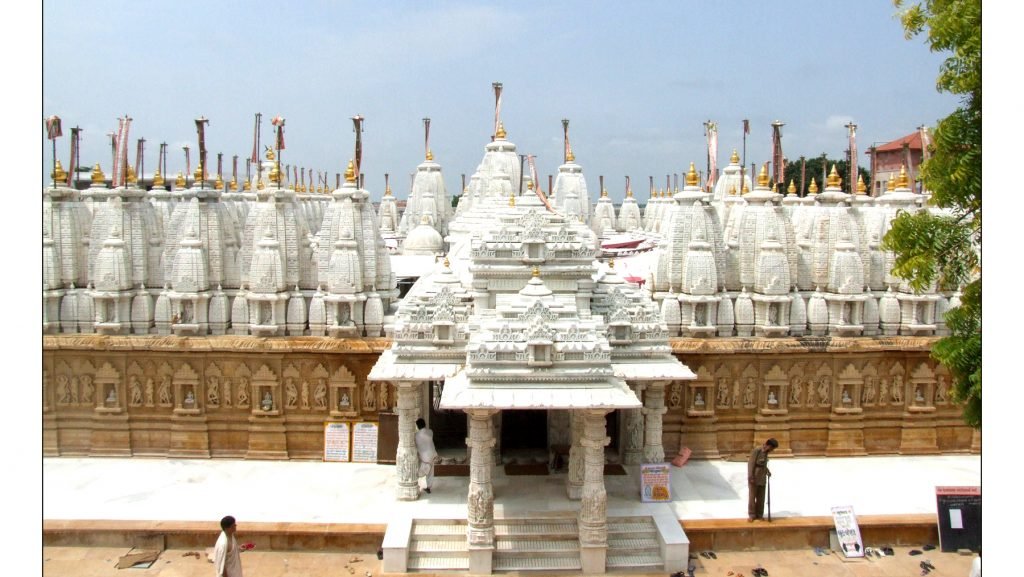
Among all important Jain pilgrimage sites in India stands the Shankheshwar Jain Temple situated in Patan district of Gujarat. The 23rd Tirthankara Bhagwan Parshvanath receives worship at this temple which holds important spiritual value for Śvetāmbara Jains. Devotees together with history enthusiasts should experience this shrine whose historic value and sacred idol exist within impressive architecture.
The Legend of Shankheshwar Tirtha
Jain holy scriptures call this site Shankhapur but also name it Shankheshwar Tirtha. According to Jain beliefs Ashadhi Shravak became deeply contemplative regarding nirvana as he sought liberation and salvation. The divine response to her inquiries revealed that the 9th Tirthankara Bhagwan Damodar Swami predicted Parshvanath to be the 23rd Tirthankara and Ashadhi Shravak to achieve salvation after rebirth as Aryaghosha, his Ganadhar (prime disciple). After obtaining this divine insight Ashadhi Shravak dedicated his life to Parshvanath worship while his statue gained respect from every deity and spirit as well as human devotees.
History
- The Shankheshwar Jain Temple has been reconstructed and restored multiple times throughout different centuries.
- The temple received renovations from Sajjan Shah at the location where the Rupen River flows during 1098 CE (VS 1155).
- Another restoration took place through Vastupala–Tejpal during 1229 CE (VS 1286) under the guidance of Acharya Vardhamansuri which added 52 new idols to the temple.
- The temple received further development and restoration under the supervision of Acharya Uktasuri while King Durjansalya yielded his support in 1302 CE (VS 1302).
- A major destruction occurred to the temple in the fourteenth century when Alauddin Khalji launched his campaigns of invasion.
- In the 16th Century the temple reconstruction took place under Vijaysensuri who returned the restored 52 idol sanctum.
- The Jain community reconstructed the temple and restored the holy statue according to their leadership in 1703 (VS 1760).
- In 1811 CE workers built the present temple design to safeguard the sacred character of the ancient holy site.
The Śvetāmbara tradition possesses 108 prominent Parshvanath idols among which one stands as the main mulnayak (idol) of Padmasana position at 182 cm (72 inches) tall.
- The temple complex at Padri houses several religious statues apart from Parshvanath such as:
- Bhidbhanjan Parshvanath (in a small temple to the right of the main idol).
- Ajitnatha (in a small temple to the left of the main idol).
- Dharanendra along with Parshva and Padmavati and Chakreshwari have their own individual shrines within the temple compound.
Religious and Cultural Significance
Amongst all Jain Tirthas Shankheshwar is considered most important. The devotee throng to the temple in specifically huge numbers during the specific religious festivals:
- Tenth day of the month of Posh
- Tenth day of the dark half of the month of Magasar
- Diwali festival
- In these auspicious days, thousands of devotees keep two-day fasts and take part in grand religious celebrations.
- In addition, the temple too is well known for its sacred chanting of scriptures, which are:
- Shankheshwar Parshvanath Stavan – Most common of all the Jain prayers
Sankhesvara Stotram – A well-known Stotra composed by Mahopadhyaya Yashovijaya in the worship of Shri Shankheshwar Parshvanath.
Ongoing Renovations and Future Developments
The Shankheshwar Jain Temple is currently being renovated and expanded to have its spiritual and architectual grandeur related magnificently. The doors of slightly temples within the ones complex will be widened along with heights of their summits be raised to support more worshippers along with enhance the visual appeal of temples.
Why Visit Shankheshwar Jain Temple
- A Sacred Pilgrimage Site: One of the holiest Jain temples, with centuries of religious significance.
- A Testament to Jain Heritage: Explore historical architecture, sacred idols, and ancient rituals.
- Experience local Grand Jain Festivals: See the crowds of devotees, grand pooja(many pujas continuing)and the Spiritual fervour during any ding Grand Jain Festivals.
- Architectural Beauty: Admire the intricate marble carvings, grand temple design, and serene atmosphere.
- A Place of Peace & Devotion: Ideal for meditation, prayer, and spiritual reflection.
related articles : 12 Best Places to Visit in Gandhinagar for Culture, Nature & History
Stay Informed With the Latest & Most Important News
Previous Post
Next Post
-
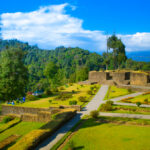 01Top 5 Best Places Visiting in Gyalshing – Monasteries, Lakes & Scenic Escapes
01Top 5 Best Places Visiting in Gyalshing – Monasteries, Lakes & Scenic Escapes -
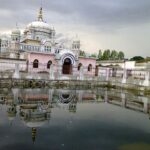 02Top 5 Best Places Visiting in Panna – Temples, Waterfalls & Wildlife Escapes
02Top 5 Best Places Visiting in Panna – Temples, Waterfalls & Wildlife Escapes -
 03Top 5 Best Places to Visit in Malerkotla – Malerkotla Fort, Sheesh Mahal & More
03Top 5 Best Places to Visit in Malerkotla – Malerkotla Fort, Sheesh Mahal & More -
 04Top 10 Best Places Visiting in Dakshina Kannad for Culture, Nature & Coastal Charm
04Top 10 Best Places Visiting in Dakshina Kannad for Culture, Nature & Coastal Charm -
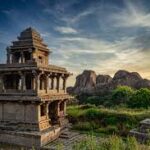 05Top 2 Best Places Visiting in Chitradurga for History, Nature & Adventure
05Top 2 Best Places Visiting in Chitradurga for History, Nature & Adventure -
 06Best Places Visiting in Shopian – Explore Top Attractions & Hidden Gems
06Best Places Visiting in Shopian – Explore Top Attractions & Hidden Gems -
 07Best Places Visiting in Narmadapuram – Temples, Waterfalls & Wildlife Escapes
07Best Places Visiting in Narmadapuram – Temples, Waterfalls & Wildlife Escapes














Pingback: 10 Best Places to Visit in Porbandar – Complete Travel Guide